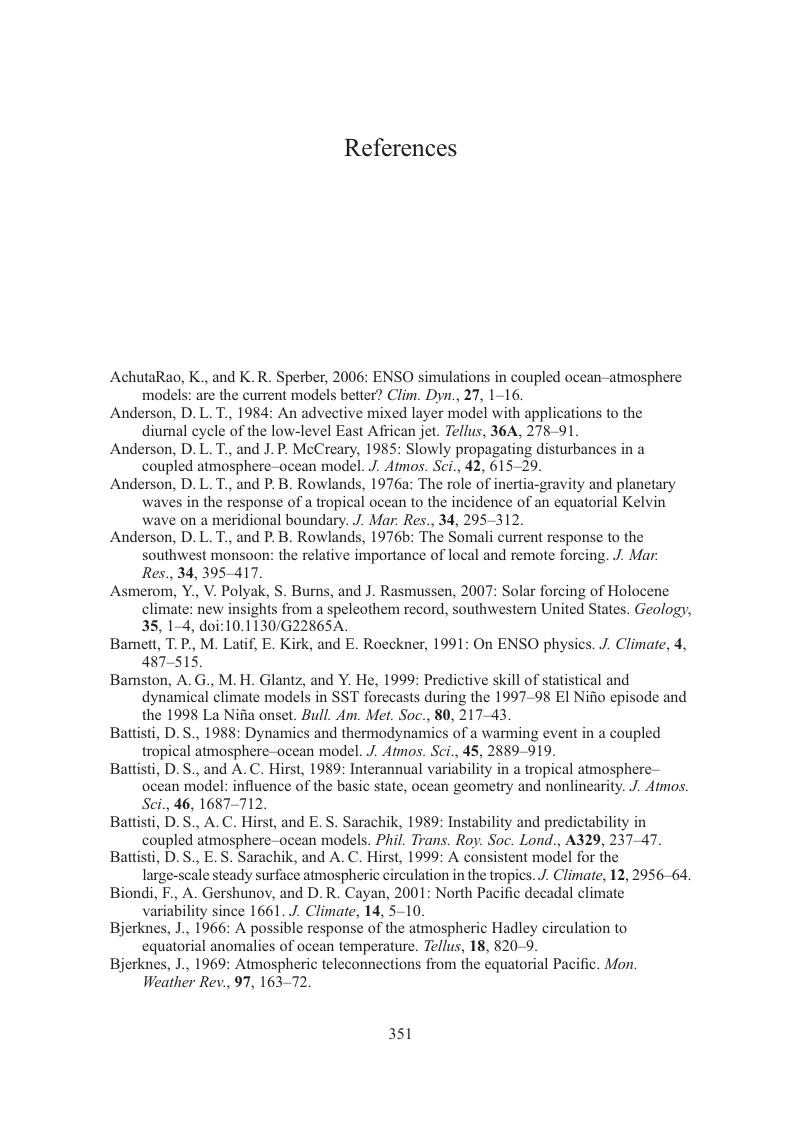Book contents
- Frontmatter
- Contents
- Preface
- List of abbreviations
- 1 Preview
- 2 The observational basis
- 3 The equations of motion and some simplifications
- 4 Boundary layers on both sides of the tropical ocean surface
- 5 Atmospheric processes
- 6 Ocean processes
- 7 ENSO mechanisms
- 8 ENSO prediction and short-term climate prediction
- 9 ENSO, past and future: ENSO by proxy and ENSO in the tea leaves
- 10 Using ENSO information
- 11 Postview
- Appendix 1 Some useful numbers
- Appendix 2 The parabolic-cylinder functions
- Appendix 3 Modal and non-modal growth
- References
- Index
- References
References
Published online by Cambridge University Press: 25 January 2011
- Frontmatter
- Contents
- Preface
- List of abbreviations
- 1 Preview
- 2 The observational basis
- 3 The equations of motion and some simplifications
- 4 Boundary layers on both sides of the tropical ocean surface
- 5 Atmospheric processes
- 6 Ocean processes
- 7 ENSO mechanisms
- 8 ENSO prediction and short-term climate prediction
- 9 ENSO, past and future: ENSO by proxy and ENSO in the tea leaves
- 10 Using ENSO information
- 11 Postview
- Appendix 1 Some useful numbers
- Appendix 2 The parabolic-cylinder functions
- Appendix 3 Modal and non-modal growth
- References
- Index
- References
Summary

- Type
- Chapter
- Information
- The El Niño-Southern Oscillation Phenomenon , pp. 351 - 363Publisher: Cambridge University PressPrint publication year: 2010



